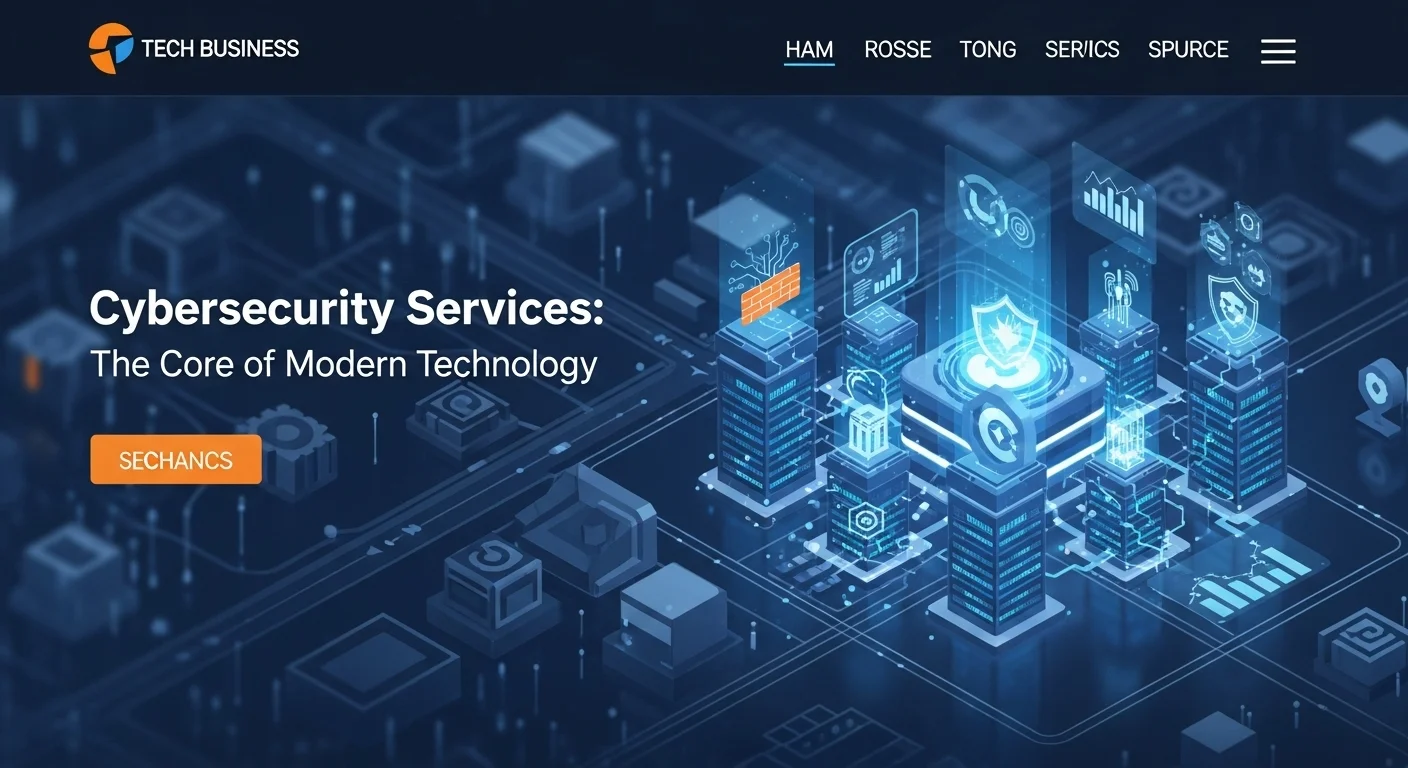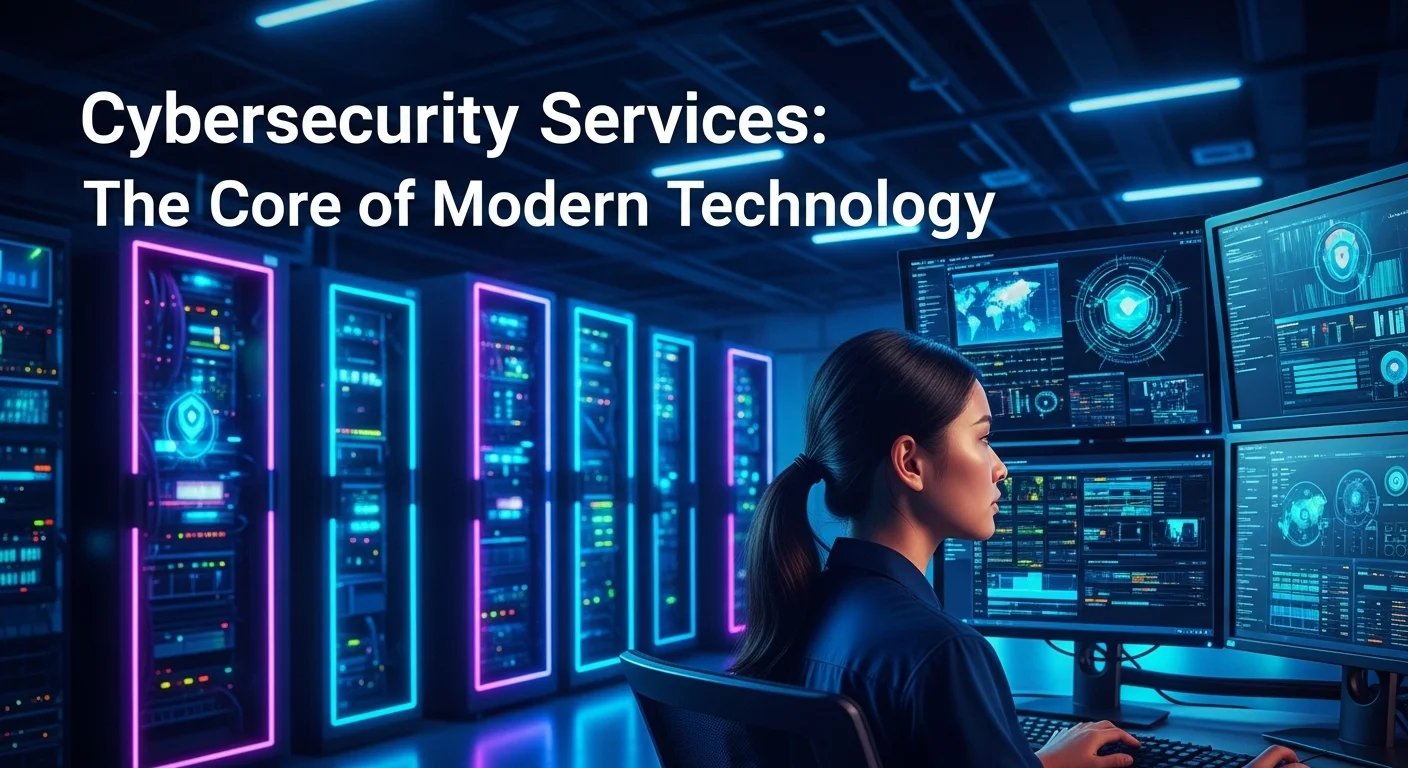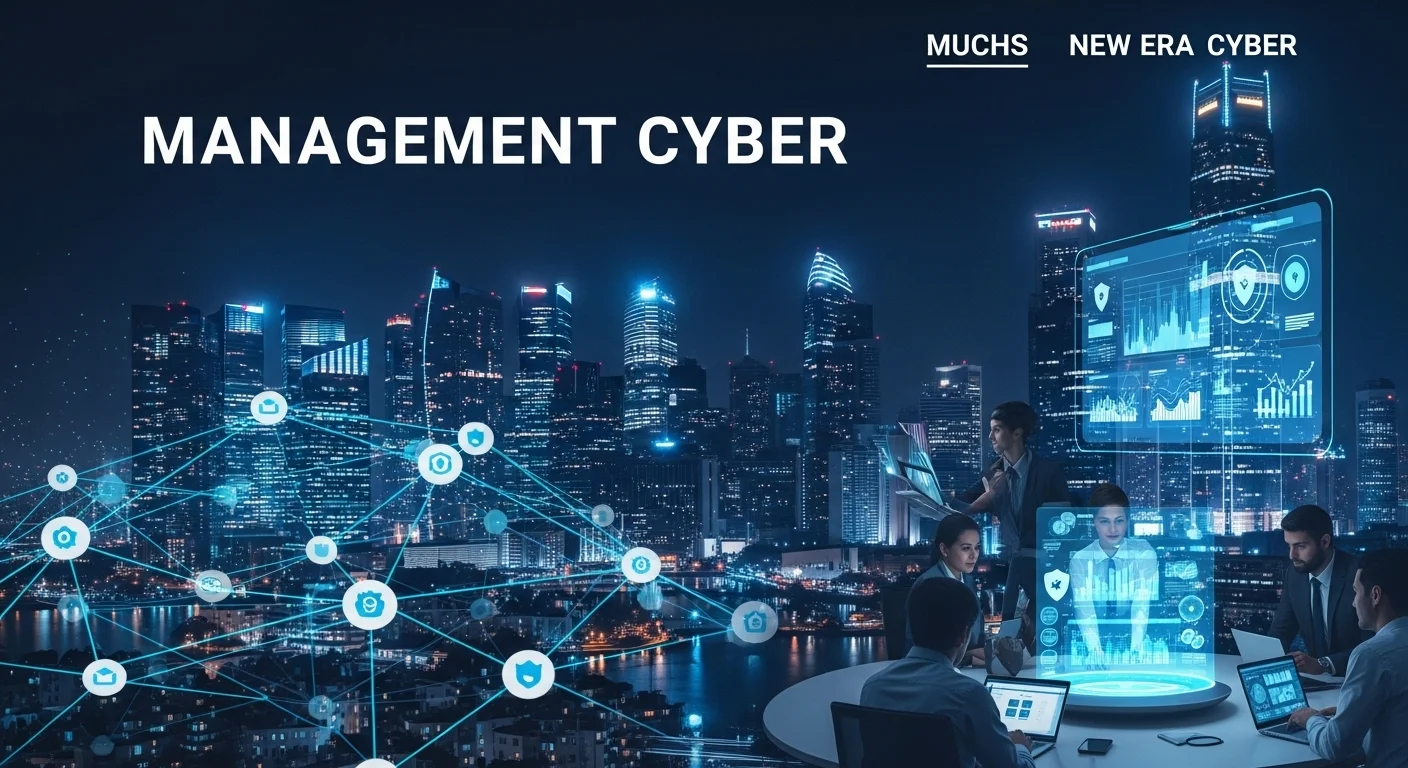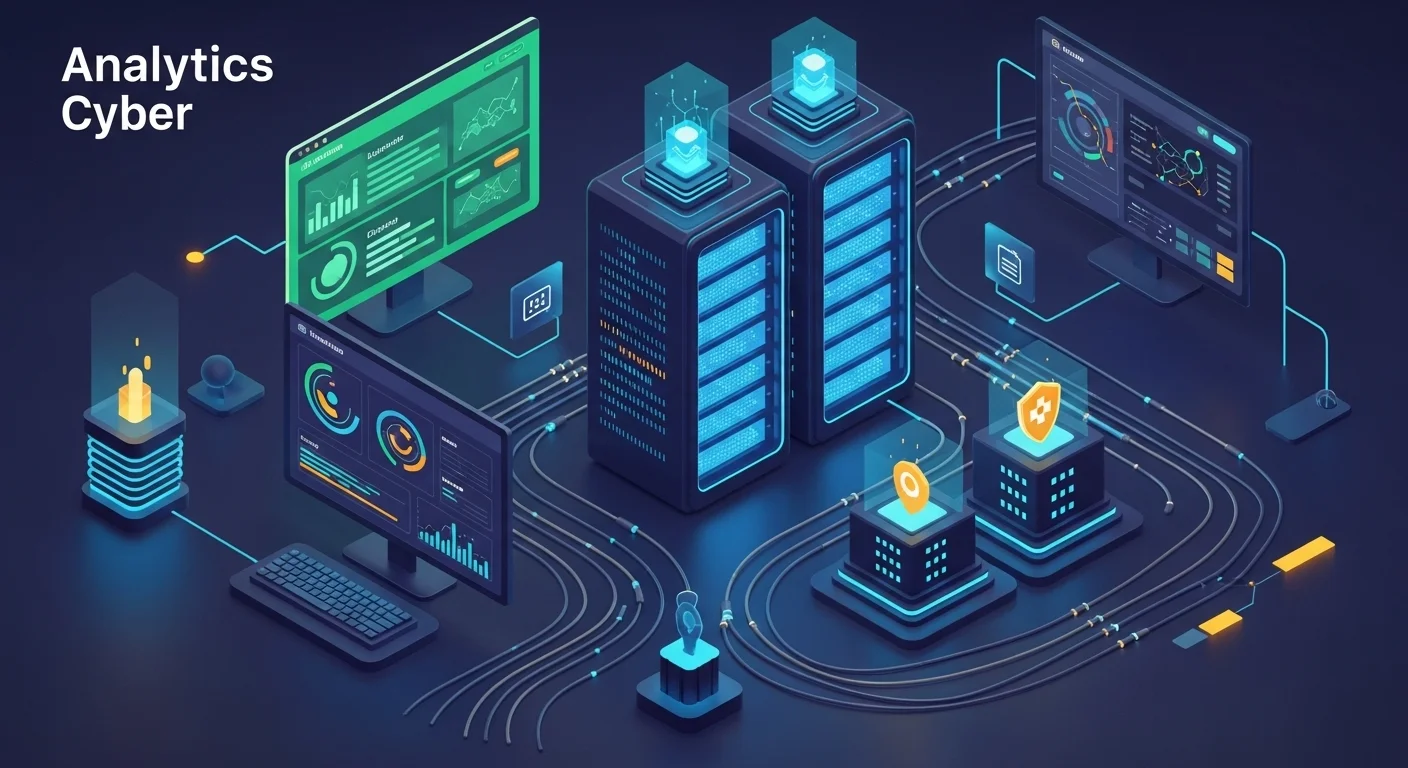Cybersecurity Services: Your Plain-English Guide to Digital Defense

Executive Summary
In my years as a cybersecurity strategist, I've seen firsthand how a single cyberattack can cripple a business overnight. It’s a scary thought, but the good news is that you don't have to face these threats alone. This guide is your friendly map to the world of cybersecurity services. We'll cut through the jargon and talk about what really matters: protecting your digital assets and ensuring your business can thrive. We'll explore the shift from simple software to comprehensive services, including the popular 'cybersecurity as a service' model. I'll share my insights on what top providers like Sophos and IBM really offer, and how cloud platforms like Amazon Web Services are changing the game. This isn't just for tech gurus; it's for any business leader who wants to understand how to build a strong digital defense. Let's make this complex topic simple and actionable together.
Table of Contents
What Exactly Are Cybersecurity Services and Why Do They Matter?
We’ve all heard the phrase 'data is the new oil.' In my experience, it's more fragile and far more valuable. Unlike oil, when your data gets stolen, it can damage your reputation, halt your operations, and lead to massive fines. As technology has become the backbone of literally every industry, it has also opened up new doors for criminals. This is where Cybersecurity Services come in. Think of them not as an IT expense, but as a core part of your business strategy, your digital bodyguard. At its heart, cybersecurity is about protecting your computers, servers, networks, and data from attacks. But the landscape of threats is so complex and fast-changing that most companies can't keep up on their own. The global shortage of skilled security experts doesn't help. This has created a vital industry of specialized Cybersecurity Services, offering professional help that ranges from high-level strategic advice to the 24/7 management of your digital defenses. They provide the expertise and tools you need to stay safe.
The Big Shift: From Buying a Product to Subscribing to Protection
I remember when cybersecurity meant buying a firewall, installing some antivirus software, and calling it a day. That mindset is dangerously outdated now. Today’s cyber threats aren’t one-off attacks; they are sophisticated, persistent campaigns run by organized criminal groups. A single piece of software just won't cut it against zero-day exploits or clever social engineering scams. This is why we've seen a huge shift to a service-based model. Instead of just buying a tool, businesses are now paying for results: continuous threat monitoring, rapid incident response, and peace of mind. This evolution is perfectly captured by the term cybersecurity as a service (CSaaS). With this model, you can outsource your security to a team of dedicated experts who use top-tier technology. It's a game-changer, making elite-level security affordable and accessible for small and medium-sized businesses, not just large corporations.
Why This Is Critical for Modern Business and Technology
The importance of these services touches every part of a business:
- Protecting Your Data: Your business holds sensitive information—customer details, financial records, secret formulas. A breach can expose all of it, leading to lawsuits, huge fines, and a reputation that’s shattered in an instant.
- Keeping the Lights On: An attack like ransomware can completely shut down your operations. Imagine your sales, production, and customer service grinding to a halt. Good cybersecurity services ensure you have solid backup and recovery plans to get back on your feet quickly.
- Staying Compliant: Many industries have strict data protection laws like HIPAA (healthcare) or GDPR (for EU customer data). Cybersecurity services help you navigate these rules and avoid costly penalties.
- Earning Customer Trust: Trust is everything in the digital age. Customers want to know their data is safe with you. A public breach can destroy that trust, sending customers to your competitors.
Exploring the Wide World of Cybersecurity Services
Cybersecurity isn't a one-size-fits-all deal. The services are incredibly diverse. For example, a provider like Sophos cybersecurity as a service is fantastic at bundling different services into a single managed solution, which is a lifesaver for mid-sized companies. Their Managed Detection and Response (MDR) service is a perfect example of CSaaS in action, giving you a 24/7 team of threat hunters. For larger organizations with more complex needs, a giant like IBM cybersecurity services often makes more sense. They offer a massive portfolio, covering everything from strategic consulting to running global Security Operations Centers (SOCs). Then there’s the cloud. Securing your cloud environment brings its own set of challenges. Amazon Web Services cybersecurity isn't one service, but a whole toolkit built into the platform, like AWS Shield for DDoS attacks and GuardDuty for threat detection. But tools are just tools; you often need an expert service provider to configure and manage them effectively. Finally, don't forget the strategic layer. Cybersecurity advisory services are for high-level planning. These consultants help you build a security roadmap, assess risks, and explain the stakes to your leadership team. It's about making sure your security spending is smart and targeted. In short, starting your cybersecurity journey means finding a partner, not just a product. Whether it's a managed service from Sophos, an enterprise solution from IBM, or expert guidance on your AWS setup, these services are the key to navigating the digital world with confidence. It’s no longer a cost—it’s an investment in your future.

Your Complete Guide to Cybersecurity Solutions for Business
To really get a handle on cybersecurity, you need to look under the hood. For business leaders and IT pros, understanding the technical methods and business strategies is key to building a defense that actually works. This guide will walk you through the available solutions, helping you compare different models and make smart choices for your company. The goal is to be proactive and intelligence-driven, not just reactive.
The Arsenal of Digital Defense: Technical Methods Explained
At the core of any great cybersecurity service are the technical activities that professionals use to find weaknesses and stop attacks. Here’s a simple breakdown:
- Vulnerability Scans vs. Penetration Tests: I like to explain these with a house analogy. A vulnerability assessment is like walking around your house and checking all the doors and windows for unlocked entries. It’s an automated scan for known weaknesses. A penetration test (or pen test) is when you hire a security expert to actively try and break into your house. They'll pick the locks and try to get past your security system to show you where your real-world weak spots are. Both are crucial for finding and fixing holes before a real burglar does.
- Threat Intelligence and Hunting: Threat Intelligence and Hunting is like having spies who tell you what the bad guys are planning. It’s about gathering information on new malware, hacker tactics, and emerging threats so you can prepare your defenses. Threat hunting is more proactive. It’s based on the assumption that an attacker might already be inside your network, hiding. Threat hunters are digital detectives who search for these hidden intruders before they can do any damage.
- Security Information and Event Management (SIEM): A SIEM system is like a central security dashboard for your entire IT environment. It collects log data from everything—firewalls, servers, applications—and analyzes it in one place. It helps spot suspicious patterns and sends alerts for investigation. A SIEM is powerful, but it needs an expert to run it, which is why SIEM-as-a-Service has become so popular.
- Incident Response (IR) and Digital Forensics: No matter how good your defenses are, you have to be prepared for an incident. A good IR plan is your playbook for when a breach happens. It outlines the steps for containing the attack, getting rid of the threat, and recovering. Digital forensics is a part of this process; it’s the science of collecting digital evidence to figure out what happened, who did it, and how to prevent it from happening again.
Integrating Security into Your Business
Great technology is only half the battle. You also need a solid business strategy to make it all work. Security has to be part of your company culture.
- Adopt a Cybersecurity Framework: Frameworks like NIST or ISO/IEC 27001 are essentially best-practice recipes for managing cybersecurity risk. They give you a structured way to assess your security, set goals, and create a plan to get there. This is often where cybersecurity advisory services provide immense value, helping you choose and implement the right framework for your business.
- Embrace DevSecOps: In today’s world of fast-paced software development, security can’t be an afterthought. DevSecOps means building security into every step of the development process. It's about making security a shared responsibility, ensuring applications are secure from the ground up.
- Build Your Human Firewall: I've seen more breaches start with a phishing email than with a sophisticated hack. Your employees can be your biggest vulnerability or your strongest defense. Continuous security awareness training is essential to turn your team into a vigilant 'human firewall.'
A Practical Look at Platforms and Resources
The market is flooded with options, so let's compare some of the big ones. The cybersecurity as a service model is dominant, but it comes in different flavors. A Managed Security Service Provider (MSSP) might manage your firewall, while a Managed Detection and Response (MDR) provider focuses on actively hunting for threats. A leader in this space is Sophos cybersecurity as a service. Their MDR solution is a perfect example of a comprehensive, outsourced security team. It combines their tech with a 24/7 team of human experts to hunt, investigate, and neutralize threats. It's an incredible value for companies that can't afford their own in-house Security Operations Center (SOC). For large corporations, a provider like IBM cybersecurity services often makes more sense. Their portfolio is massive, handling complex, global security needs from pen testing to managed SIEM. IBM excels at providing integrated solutions for hybrid cloud environments, often using its Watson AI for powerful threat analysis. And what about the cloud itself? With Amazon Web Services cybersecurity, security is a shared job. AWS secures the cloud, but you secure what's *in* the cloud. They give you great native tools like AWS Security Hub and Amazon Inspector. But using them right takes expertise. This is why many service providers now offer 'Cloud Security Posture Management' (CSPM) to help you configure your AWS environment securely. The choice between building in-house or outsourcing is tough. In-house gives you control but is expensive. Outsourcing gives you instant expertise at a predictable cost. In my experience, a hybrid approach often works best: an internal team for strategy, partnered with a service provider for 24/7 monitoring and specialized skills. Ultimately, the right solution is a mix of smart tech, solid strategy, and the right partners. It’s about understanding your risks and committing to continuous improvement.

Actionable Tips and Strategies to Boost Your Tech Experience
In the world of technology, just installing security tools and hoping for the best is a recipe for disaster. To truly improve your security and your overall tech experience, you need smart strategies and the right partners. This is about more than just defense; it's about enabling your business to operate with confidence. For any business or tech enthusiast, thinking about cybersecurity strategically can turn it from a burden into a real advantage. Here are some practical tips I always share with my clients to help them build a resilient digital foundation.
Foundational Best Practices for Everyone
Before you even think about advanced services, make sure your foundation is rock-solid. These are the non-negotiables.
- Build a Culture of Security: Your 'human firewall' is your best defense. Invest in regular, engaging security training that covers phishing, strong passwords, and social engineering. Run simulated phishing tests to see who bites—it's a great learning tool. When everyone feels responsible for security, your organization becomes dramatically safer.
- Live by the 'Zero Trust' Principle: The old idea of a 'trusted' internal network is dead. A Zero Trust mindset means you 'never trust, always verify.' Every user and device must prove they are who they say they are before accessing anything, no matter where they are. Implementing multi-factor authentication (MFA) on all your accounts is the single most important first step here.
- Know What You Own: You can't protect what you don't know you have. Keep a detailed inventory of all your hardware, software, and data. This is essential for good vulnerability management, as you'll know exactly which systems need patching when a new threat emerges.
- Be Relentless with Patching: Most successful hacks exploit old, known vulnerabilities in unpatched software. Create a formal process to test and apply security patches quickly. Prioritize patches based on how critical the vulnerability is and how important the system is to your business.
- Have a Plan and Practice It: A security incident *will* happen. The question is whether you'll be ready. A clear Incident Response (IR) plan is your step-by-step guide for what to do during a breach. Just having a plan isn't enough—you need to test it regularly with mock drills so everyone knows their role when the pressure is on.
Tips for Leveraging Services for Maximum Impact
Different businesses need different strategies. Here's how to tailor your approach.
- For SMBs: Embrace 'Cybersecurity as a Service': If you're a small or medium-sized business, you probably don't have the budget for a dedicated security team. This is where the cybersecurity as a service (CSaaS) model is a lifesaver. Partnering with a Managed Detection and Response (MDR) provider like Sophos cybersecurity as a service gives you 24/7, enterprise-grade protection for a predictable monthly fee. It lets you focus on your business, knowing you're protected by experts.
- For Large Enterprises: Unify and Integrate: Big companies often have a messy collection of security tools that don't talk to each other. The key here is to unify. Look for comprehensive platforms from providers like IBM cybersecurity services that can give you a single view of your security across complex, hybrid-cloud environments. Their use of AI and automation can help your team cut through the noise and focus on what matters.
- For Cloud-Native Businesses: Master Your Cloud Security: If your business lives in the cloud, you need to become an expert on your platform's native security tools. If you're on AWS, for instance, get to know Amazon Web Services cybersecurity tools like IAM, GuardDuty, and Security Hub inside and out. Then, consider a Cloud Security Posture Management (CSPM) service to continuously check for misconfigurations.
- For Everyone: Don't Skip the Strategic Advice: No matter your size, an outside expert perspective is invaluable. Working with cybersecurity advisory services can help you align your security plan with your business goals, prepare for compliance audits, and build a long-term roadmap. It ensures your efforts are both technically sound and strategically smart.
Essential Tools and Final Thoughts
Beyond services, make sure your team uses essential tools like a good enterprise password manager, has MFA enforced everywhere possible, and has Endpoint Detection and Response (EDR) on all computers and servers. If you use cloud apps heavily, a Cloud Access Security Broker (CASB) can give you much-needed visibility and control. To wrap it up, improving your security is a journey, not a destination. It's a mix of solid fundamentals, strategic partnerships with service providers like Sophos or IBM, and the right tools. When you start seeing cybersecurity as a business enabler instead of a roadblock, you build the foundation for trust, resilience, and growth in our connected world.
Expert Reviews & Testimonials
Sarah Johnson, Business Owner ⭐⭐⭐
The information on Cybersecurity Services is good, but as a business owner, I would have loved to see more real-world case studies or practical examples.
Mike Chen, IT Consultant ⭐⭐⭐⭐
This is a solid article about Cybersecurity Services. It really helped me get a better grasp of the topic, though a few of the more technical concepts could have been broken down even further.
Emma Davis, Tech Expert ⭐⭐⭐⭐⭐
Fantastic article! A truly comprehensive look at Cybersecurity Services. It was a huge help for my specialization, and I found it perfectly clear and easy to understand.



